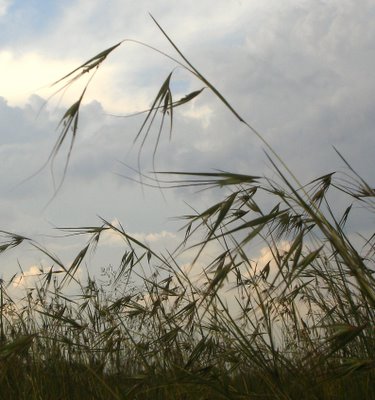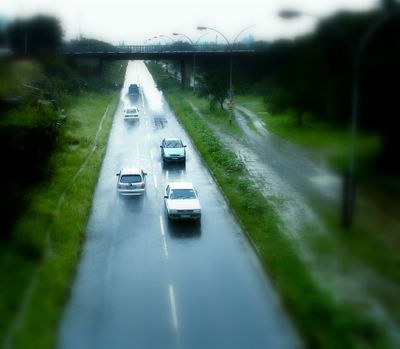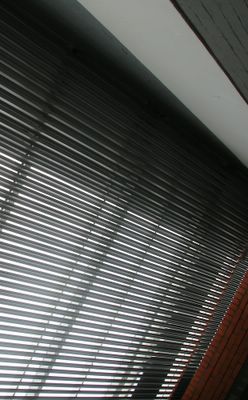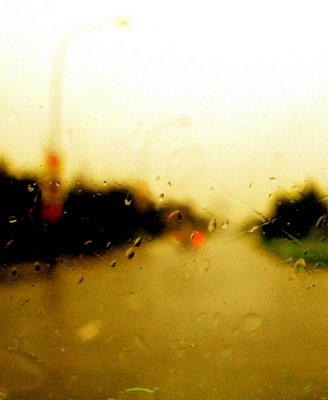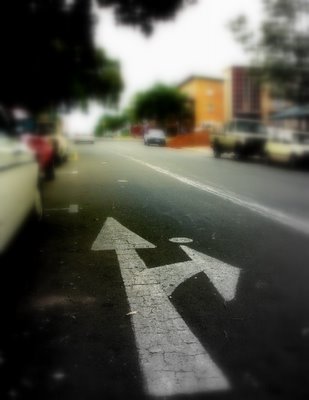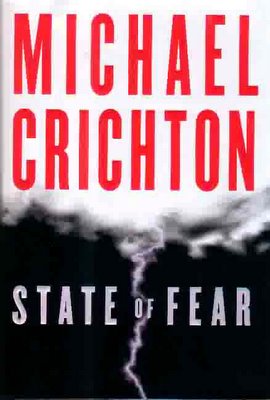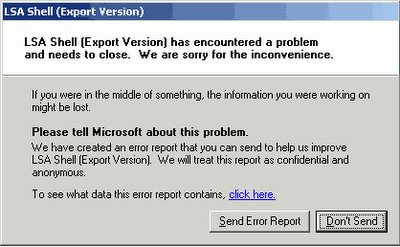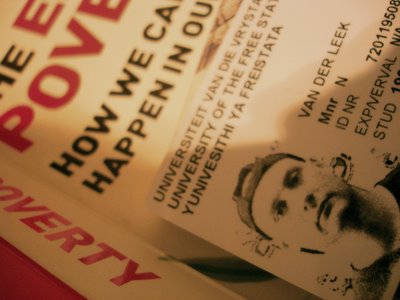 Eenheid
Eenheid means unity. It is Apartheid’s opposite. South Africa is on a road between these two social extremes, and the outcome is not guaranteed. The road to unity is long and difficult, and the going, to redress poverty and disease, painfully slow. Having returned from a total of 6 years abroad, Nick van der Leek returns to ask: What has changed? Where is the country going, and where is the road likely to take him and everyone else? Is there a chance of finding
Eenheid at the end of the road?
Having enervated for two years in the United Kingdom and four in crowded South Korea, I return to South Africa a different person. While I left poor, embittered and angry, I return feeling love and relief and a growing sense of excitement, to be home. I’ve found the life of a foreigner, an outcast abroad, exciting but exhausting, colorful and enriching, but also lonely, finally becoming monotonous and tiring. Travel is an insight filled education, and perhaps the greatest insights come of home when one is furthest away from home.
During the flight home I sit beside a black couple, young students, who have been holidaying in Thailand. I return to find the economy bursting out of its seams: almost 5% GDP, the highest in 20 years, inflation at its lowest in a decade, the exchange rate almost impossibly strong. And on the surface, a plausible and pleasant harmony in the malls and shops where blacks and whites represent a vivid combination of color and affluence as they graze together like cattle and sheep in their contemporaneous efforts at consumption and urban survival. It’s a sharp contrast from the homogeneous dullness of England and especially Korea. Here is an energetic diversity, especially in the youth.
I’m back in Bloemfontein, a student city in central South Africa, where I grew up under Apartheid. Bloemfontein is a mostly Afrikaans, Christian conservative city. It’s a lot less conservative now, and a lot more cosmopolitan. A lot of student housing in the suburbs is filled with international students, from as far away as China, but mostly from African states like Nigeria, Namibia and Lesotho. Our next door neighbor is a black doctor. The girls around here are famously stunning. Both whites and blacks take care of their appearance; many wear eye-popping blouses and skirts. Big hair, for the boys, appears to be in. And Bloemfontein has become officially cool, now that local boy, Ryk Neethling, the world champion swimmer (and Olympic gold medal winner), has become South Africa’s favorite celebrity. Bloemfontein has also produced top female triathlete, Kate Roberts, and over the years famous people like JRR Tolkien, Steve Hofmeyr, the singer/songwriter, filmmaker Leon Schuster, athlete Zola Budd and the late Hansie Cronje. International teams come to South Africa now, to centres like Bloemfontein, to compete, and we send teams abroad – cricket and rugby especially, but also specialized sportspeople like Kate Roberts (triathlon) have the priviledge of participating in the Commonwealth Games. Other talents are dispatched to the Soccer World Cup (this year our team did not qualify, but South Africa host the next World Cup), the Olympics, even the Tour de France. My generation missed out on participating in any of these events during the years of isolation. It’s still a bitter pill to swallow.
On Saturday the 18th of February, I ride in a local 100km bicycle race. At least 4 of the cyclists in our bunch are from Lesotho, and another half dozen black cyclists, are locals. I’ve cycled for a few years, but being in a bunch with black cyclists is new for me, and I soon find out, also for them. Although they are strong, cycling is a subtle and strategic sport, and riding in a bunch is unnerving. A black cyclist swings about erratically and at one point, almost knocks me off. A cyclist beside me tells him, “Watch out.” Over a 100km we get to know the nuances of the riders around us pretty well. With 10km to go, 2 black riders break off and we’re unable to catch them. I’m impressed.
The school I attended in Bloemfontein did not permit blacks to attend, and neither did any of the others. Even when I was a student at Free State University in 1991 there was just a trickle of black students; now it is positively
cosmopolitan. In my 7 years at university, I remember how shy, lost and clicky the African students were, and the tension and antagonism going on in the Afrikaans hostels when their new inmates moved in.
Six years have passed and I’m back on campus. I’ve signed up for a postgraduate course at the University of the Free State. I’m one of
26 000 students. Today in lectures, I ask a question and a few seconds later, an African girl sitting right in front of me asks a question, and then offers another comment.
A third year student of Social Sciences tells me that a very cute black guy “thinks he’s white” because he has a white girlfriend.
She adds, “He can do so much better.” Everyone in the group laughs. It’s
casual now, on campus, but there are occasional incidents. I’m told that an Afrikaans guy from the Reitz hostel beat up a black girl from Zimbabwe last year.
I’m inspired and thrilled by the new youth, the vigor and turns of color, but is it all just a meretricious guise? I interview my Drama lecturer, an Italian lady by the name of Manuella Loviso. She points to a straw mat pinned to a board behind her.
“A girl gave that to me. A black lady really. Her name was Kenny. She died 2 years ago of Aids.”
Manuella tells me about Mrs Mosala, who brought her green peppers from her garden in Lesotho. Are these gestures real evidence of change?
She tells me of the unrest at the university two years ago, when there were rallies (she points outside her window), “Out there,” in the road below, calling for cheaper university fees. All appears to have been resolved; there have been no rallies since.
In fact, the Free State University now has a reputation for
leading the transformation process, becoming a truly multicultural village. These transformations and language policies have been endorsed by Nelson Mandela.
Manuella tells me that the students of color come from as far afield as Uganda and Eritrea, many from neighboring Lesotho, and both local and international students are beginning to feel more at home on campus. I’ve personally met Asians from Hong Kong, and Taiwan. She says, “You get a sense of it in the classroom. They’re more oriented now, and showing greater confidence.” She points out that they are not always competent, but this is true of all students.
I’m swimming in the local gym, and in the lanes on either side of me are young children. One is a little girl, with dark, chocolate brown skin. Her green Eunice gap reminds me that education has changed across the board. Eunice, when I was at school, also had no black students. Today the schools where I live, in Bloemfontein, are
known by the races attending them: Brebner is a school where mostly Asian students go, CBC is filled with mostly Africans, and schools like Grey College, Saint Andrews, St Michaels and Eunice have smaller proportions of African students. The boy’s schools have had to introduce new sports like soccer alongside conventional national sports like cricket and rugby to be fair to every scholar. When I was at Grey there was no soccer in High School, so I feel somewhat envious.
The local cricket team, the Eagles, and the rugby team, the Cheetahs, have stars players of color. Brian Habana, a Springbuck on the national side, is the
fastest player in international rugby. Makhai Ntini remains a fearsome bowler on the South African cricket squad.
But not all is positive. The roads in Bloemfontein are cracked and potholed. As a cyclist I’m painfully aware of this.
Crime remains a problem: During my first few days in Bloemfontein there were a series of murders, attacks and robberies. Speculation was that with everyone away on holiday, criminals were taking their chances. Still, I go jogging alone at night, feeling safe, but looking over my shoulders in the darker neighborhoods on my route. Two weeks ago my girlfriend’s cell phone was stolen. The thief was captured on camera. While the one distracted her attention, the other quickly pocketed her phone. Both remain at large.
I’m personally finding
Affirmative Action (the government approved policy of employing a representative workforce) difficult to swallow. I’m painfully conscious that I am a white male. A white female has a better chance of finding work than I do, and a black female has the best chance. Unemployment continues to be worryingly high, at around 30%. And of course, AIDS, with over 5 million infected, continues to hammer at the country’s morale.
I’ve interviewed a lecturer, now I approach a number of students. At first I feel, out of politeneness, the black students are saying what they think I want to hear. But then they drop their guard.
They tell me, “There are too few black lecturers at the university.” One attractive girl from Namibia, studying medicine, tells me: “My lecturer told me, in front of the class, that he didn’t think I’d make it to my final year.” She feels insulted, and feels the whites
still dominate too much. She says the white lecturers are difficult to approach, and offer tips on tests to white students but not to them.
Her friends agree, saying blacks aren’t given enough opportunities. I argue that when they leave university, doors are opened for them, and not for white students. Lebo says, they’re shut out of the intervarsity, and important functions have a few token blacks.
Once again I argue that it might just be a case of preparation, like an athlete making ready for a race, it takes time to integrate into a new environment.
But I surrender when they cite a number of disheartening anecdotes. The medical student is explicitly angry at whites, saying, “I don’t like whites.” She tells me that at the time of the (recent) rugby match between the Bulls and the Cheetahs, she was walking on campus and someone called out, “Hey kaffir.” It wasn’t the first time.
I’m embarrassed.
The girls tell me that on the surface, the appearance is pleasant, but under the cover is a lot of resentment. Blacks blame whites for a lack of opportunity, and 10 minutes later, sitting down to dinner with my Afrikaans girlfriend, her brother and others say the same thing: they blame the blacks for the lack of opportunities. I ponder: “Maybe both sides are blaming the other, when neither is to blame. Maybe, for example, trying to get a job, is just difficult. But each side is in the habit of heaping blame on the other side. Maybe our focus should be on doing what’s possible, instead of blacks blaming whites and whites blaming blacks for every thing that seems unfair. Life is unfair.” This starts a lively debate, that strays into farm seizures and mixed marriages.
The Free State, and Bloemfontein, has one of the lowest rates of employment in the country. The city is, as mentioned earlier, merely a student city. Local people like Ryk Neethling and the late JRR Tolkien did not wait for their opportunities. They worked hard, and seized their chances. Isn’t that a law of nature? Isn’t our racism just an excuse?
South Africa has been called,
‘The World in one country.’ It is. It has beauty and diversity in its countryside, its flora and fauna, and its people. The country’s history is a tragedy, and if the country was a person, it would be an old, but exceptional man. Someone like Nelson Mandela. Most of that existence has been the denial of life, liberty and property. In the old South Africa, the mantra under the emblem read, Unity is Strength. We did not believe it, not enough to live it. Slowly, the country with 25% of the wealth of the African continent is starting to heal. The country, at times, has the appearance of
Eenheid. I believe we are finding our way, but there’s a long way yet ahead of us all.
